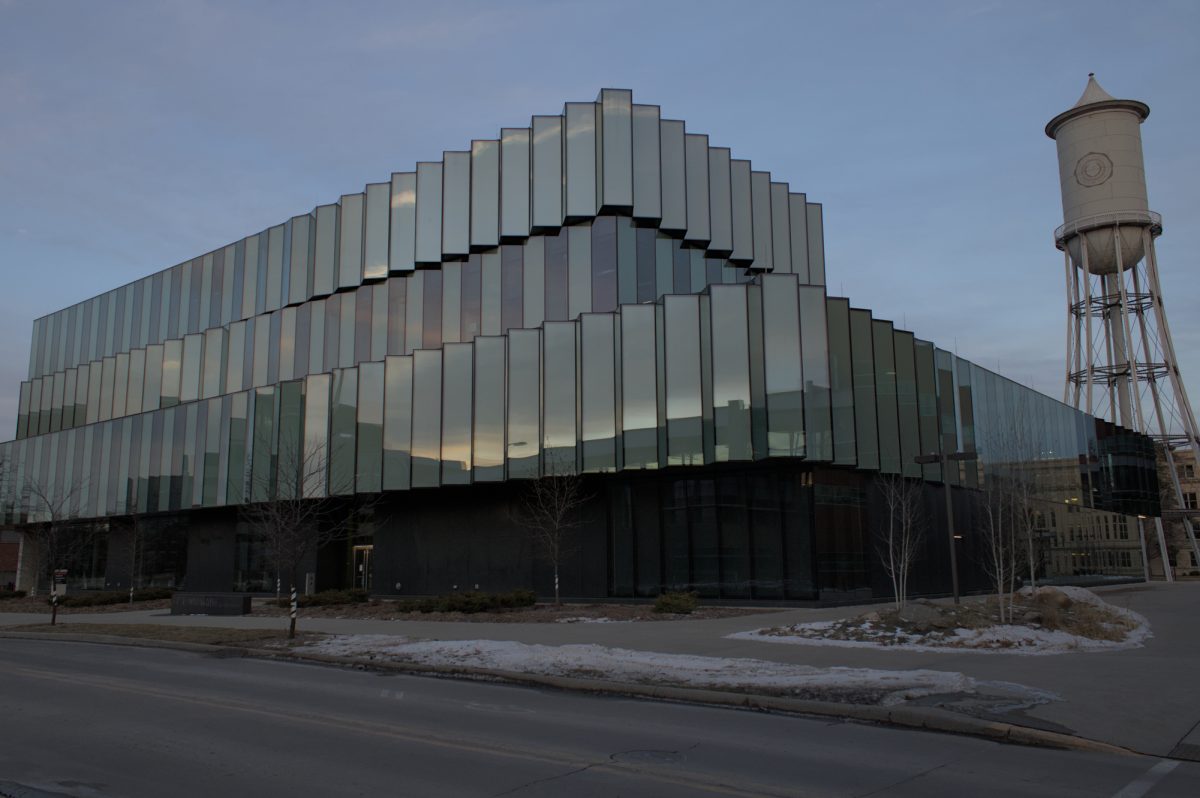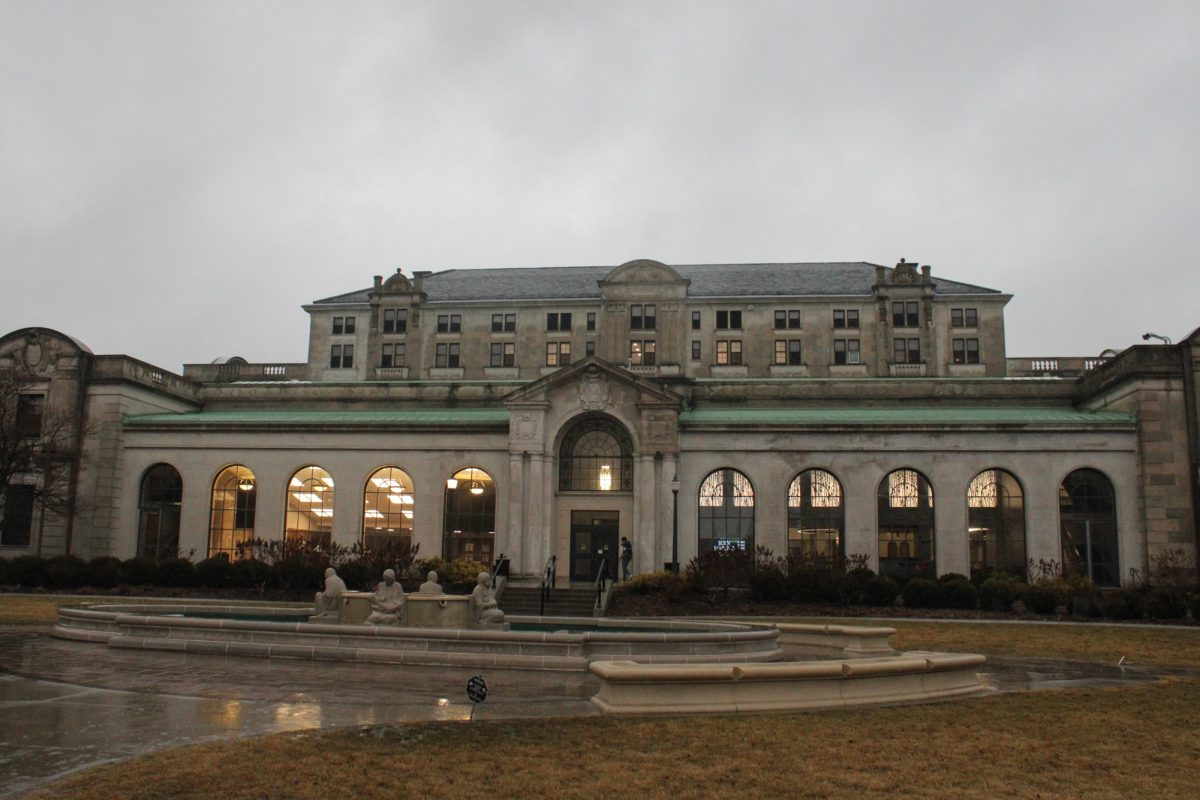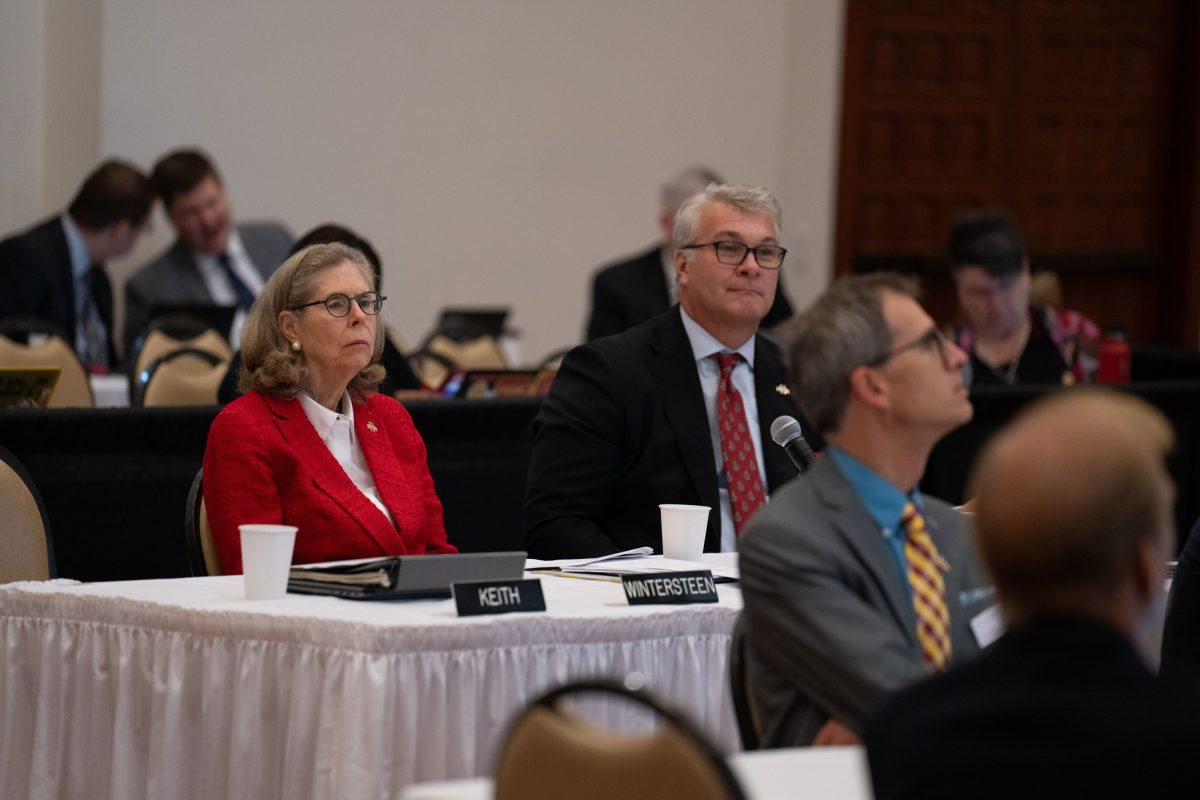The College of Design held an architecture portfolio workshop on Wednesday and walked students through how to present their portfolios to potential employers.
The event, titled “Narrative + Presentation,” is the third in a seven-part series exploring career fair readiness and portfolio development hosted through a collaboration of multiple design-related student organizations and the College of Design Career Services.
With free food provided, the presentation began discussing how to write about a portfolio project.
Gabriella Saholt, a fifth-year student in architecture, and Sebastian Salamanca, a third-year architecture student, led the presentation, highlighting the importance of pulling the reader of a portfolio in.
“You want a strong first few sentences, like a hook, sort of like the beginning of a song,” Salamanca said.
Emphasis such as using bold and italics to highlight key phrases, alongside utilizing large images, were noted as strategies to draw the viewer in – Salamanca described this as finding the “money shot.”
Discussing portfolio visualization, Salamanca underlined other ways to set one’s portfolio apart.
“Process work is great,” Salamanca said. “Sketches are very popular right now.”
The presentation showcased best practices for discussing a portfolio in preparation for the upcoming College of Design career fair to be held on Feb. 20.
“Start with what your main thesis is, then go into more context,” Saholt said.
The presenters described that when discussing a portfolio with an employer, one should coincide their verbal pitch with images of their work to avoid “hopping around” their portfolio.
Time was another focus of the presenters. Salamanca stressed that one might have 10 minutes or less to show off their best work accumulated across multiple semesters, making organization and pacing essential to a successful employer interaction.
By putting the best project first, Saholt and Salamanca described, one is able to set the scene in speaking about their work.
Salamanca ended the presentation with some advice for his architecture peers.
“Be confident, be casual,” Salamanca said. “Remember that the person interviewing you was once in the same shoes.”
The workshop then changed gears into a “speed dating” setup, where the attendees organized into pairs to practice presenting their portfolios, gaining experience and absorbing feedback alongside a ticking clock.
The pairs cycled each ring of the timer, providing the opportunity to hear feedback from multiple peers of varying years and experience levels in the architecture program.
“I feel like the main takeaways were verbally presenting [my portfolio], something that I really haven’t done,” Bryson Beaudry, a third-year in architecture, said. “Something simple like that makes you rethink the way that you made your portfolio and what you can do to change it, making it more comprehensive.”
Sierra Wroolie, a fifth-year in architecture, helped in the event’s planning.
“I was excited when we talked about the activities we were going to do,” Wroolie said. “Instead of a lecture and telling us what to do, we had activities and could practice with other people. It was good to get other perspectives about what they think is most important coming from outside of the project and what I should put more emphasis on.”
According to Saholt, in previous years, various design student organizations held their own portfolio reviews and workshops.
“The idea behind this was to get everybody to pull their resources together so that, as a collective, we can all improve our portfolios and career development,” Saholt said.
Abby Klostermann, a fifth-year architecture student, also helped plan the workshop series and stated that this collaboration of student groups streamlined the process of presenting information.
“Students don’t have to go to one event from one club and then try to go to another event that’s kind of similar from another club,” Klostermann said. “It’s all one cohesive event.”
Klostermann also noted career fair readiness as a catalyst for the programming.
“Portfolios are a huge part of getting internships, talking about your projects and networking,” Klostermann said. “I think this is good experience to prepare for the career fair, but also just to interact with their classmates, with their peers.”
Olivia Maasdam, a third-year in architecture who aided in the workshop’s organization, reflected upon her second year in the program.
“Something like this last year would have been really nice to get your foot in the door to this kind of networking thing,” Maasdam said.
David Doan, a third-year in architecture who also helped with the workshop’s planning, keyed in on the interaction fostered at the event.
“I think it’s easy to stay in your own bubble and just go to your own club event, but this just brings everyone together,” Doan said. “When we were second years we didn’t know how to interact with other people that weren’t in the same class as us–this program, this workshop, I think, is really helpful.”
Maasdam’s hopeful intent is to continue the workshop series next year now that the “framework is built.”
The next topics in the workshop series include resumes and cover letters, professional portfolio reviews and a mock career fair. Architecture students can find the times and dates for these events in their email.














